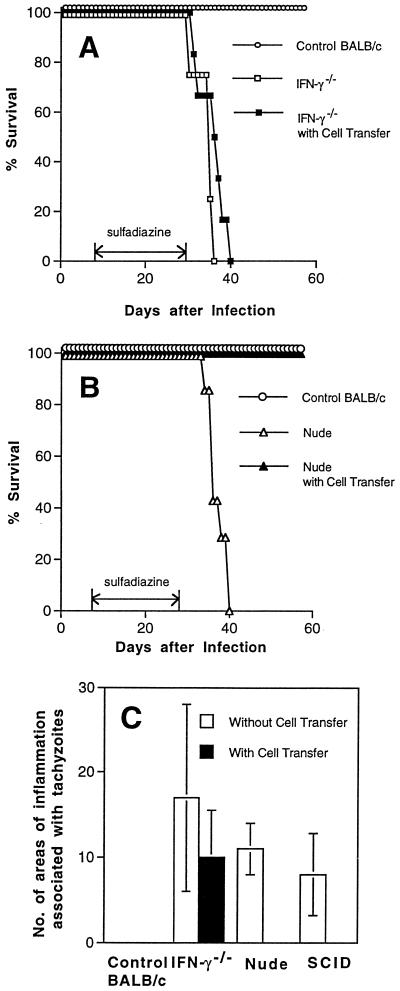FIG. 1.
Mortality (A and B) and development of TE (C) in T. gondii-infected, sulfadiazine-treated IFN-γ−/−, nude, and SCID mice with and without adoptive transfer of immune spleen cells. Mice (A, six mice in each group; B, seven mice in each group; C, four mice in each group) were infected with 10 cysts of the ME49 strain perorally and treated with sulfadiazine for 3 weeks beginning 4 days (IFN-γ−/−) or 7 days (nude and SCID) after infection. Nine and 2 days before discontinuation of sulfadiazine treatment, mice received an intravenous injection of 2 × 107 immune spleen cells from infected, control BALB/c mice (see Materials and Methods). Histological studies were performed 5 days (IFN-γ−/− mice) or 7 days (nude and SCID mice) after discontinuation of treatment with sulfadiazine. Two to four sagittal sections (distance between sections of 50 μm) of the brain were stained with immunoperoxidase stain by using tachyzoite-specific SAG2 antibody and evaluated for counting. The mean value from these sections for each mouse was calculated as the number per section. The data shown are pooled from two independent experiments (A and B) or representative of two separate experiments (C).

